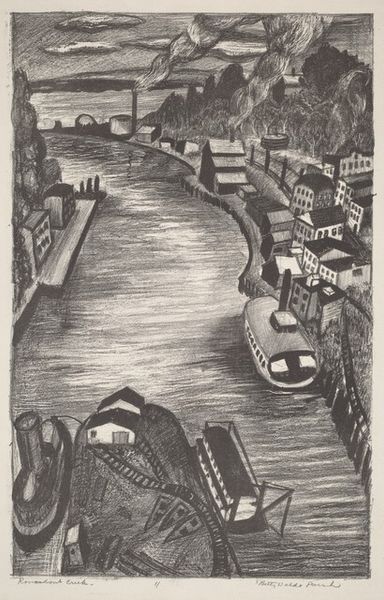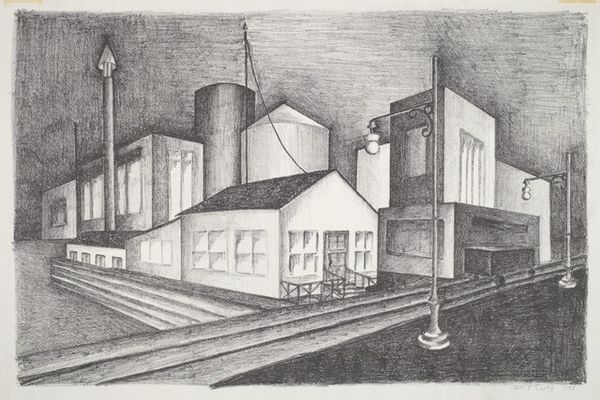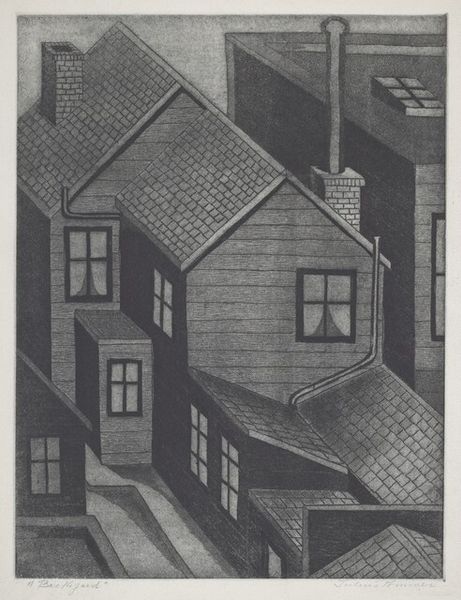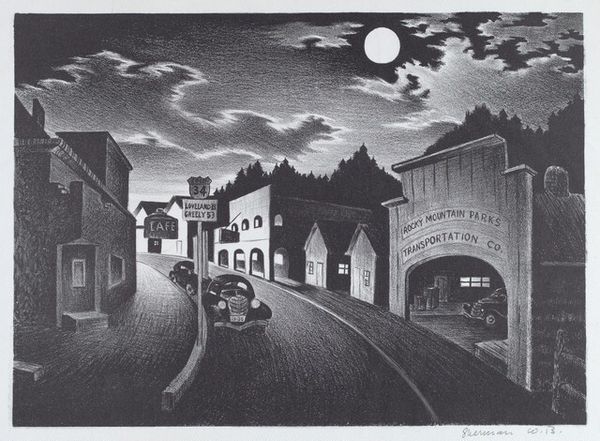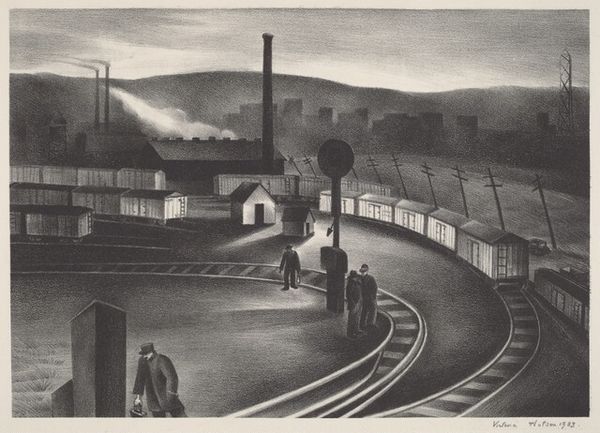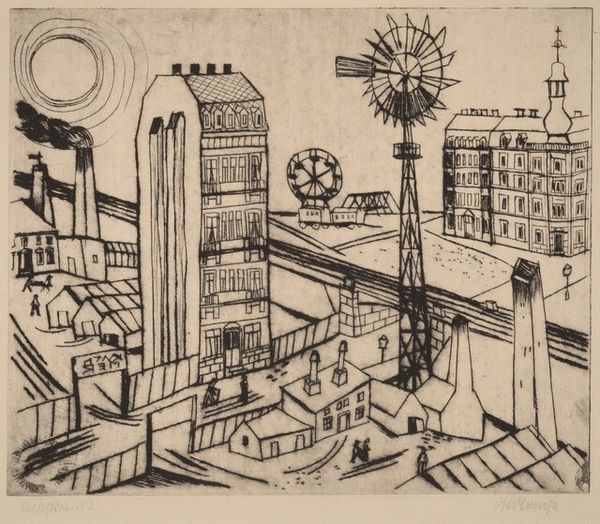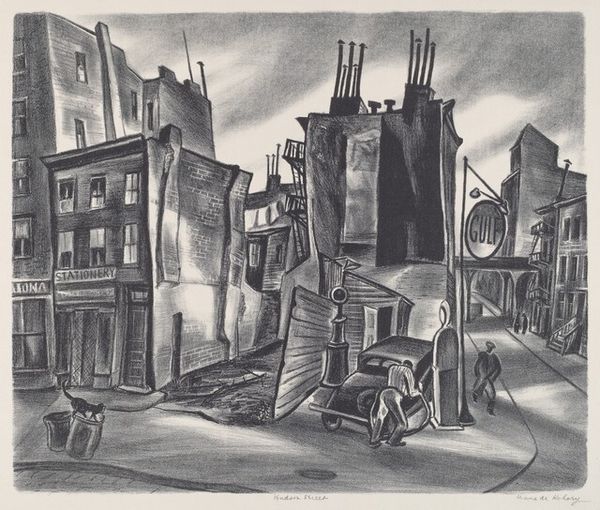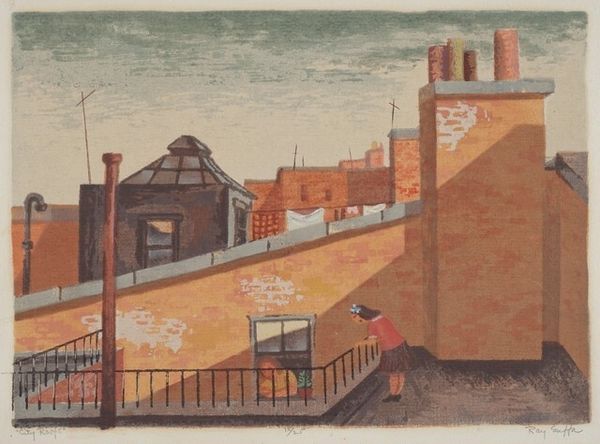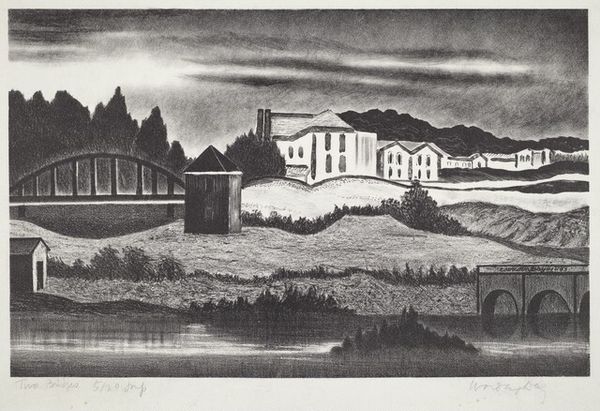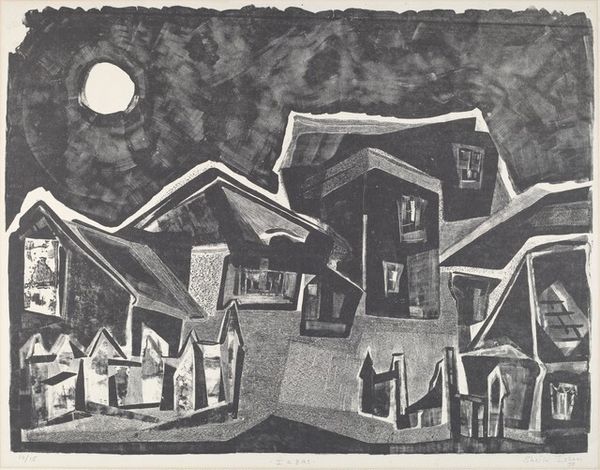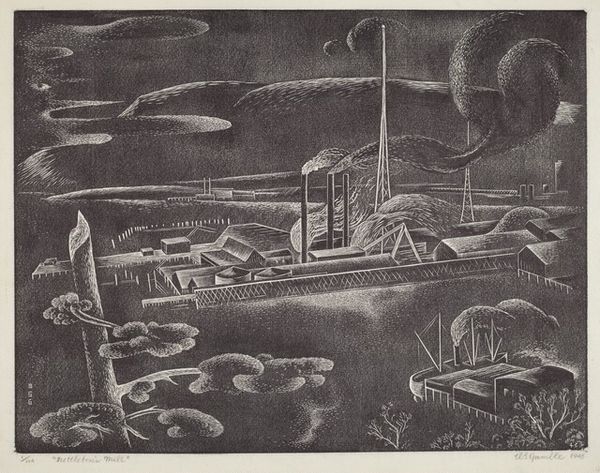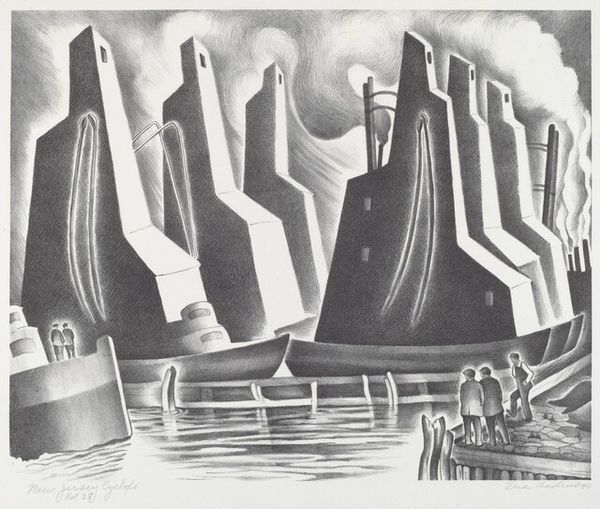
drawing, print, pencil, graphite
#
pencil drawn
#
drawing
# print
#
landscape
#
pencil drawing
#
pencil
#
graphite
#
cityscape
#
graphite
#
realism
Dimensions: Image: 269 x 366 mm Sheet: 405 x 547 mm
Copyright: National Gallery of Art: CC0 1.0
Editor: This is "Car Barns" by Albert William Heckman, created in 1935 using graphite or pencil. It feels almost… ominous. The cityscape is gray and blocky. What strikes you about this piece? Curator: It certainly captures a particular moment in American history. Heckman made this during the Great Depression. The imposing architecture and muted tones might reflect the somber mood of that era, and the visual weightiness suggests both stability and confinement, which were pertinent concepts amid economic crisis and shifting political priorities. Do you think the choice of subject matter - the utilitarian car barns - is significant? Editor: Absolutely, it’s interesting he chose this, as it may show social realism with the intent to showcase urban scenes during the depression era, which contrasts with the earlier more idealistic approach to art. The geometric forms of the buildings against the more organic landscape also give the picture a distinct balance. How was Heckman positioning his work in that period, what do you think he was trying to achieve by choosing these subjects? Curator: Heckman's work during this time participated in the visual discourse surrounding labor and industry in America. We need to understand art produced under the New Deal. There was significant governmental funding and a public desire for art that spoke to and for the common person. It's a powerful example of how socio-political contexts profoundly influence the creation and reception of art. It encouraged realism and the depiction of scenes familiar to ordinary Americans, reinforcing values like resilience. Did this art act as a mirror reflecting anxieties or as a tool instilling a sense of shared purpose and national identity? Editor: That's really interesting to think about, the way government initiatives can directly shape artistic output and subject matter to reflect national sentiment. Curator: Exactly. Considering art through a historical lens makes all the difference. It challenges us to move beyond aesthetic appreciation to broader understanding. Editor: I’ve definitely gained a much deeper appreciation by understanding the social forces that influence these works.
Comments
No comments
Be the first to comment and join the conversation on the ultimate creative platform.
